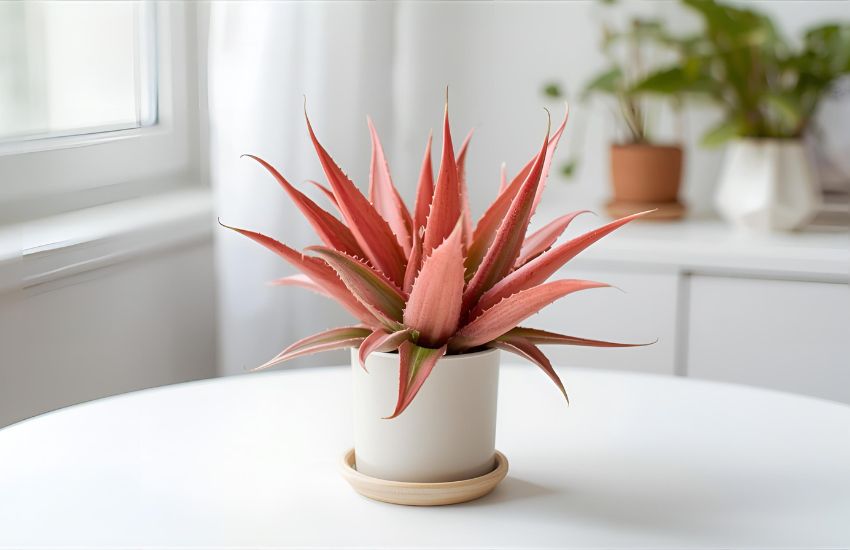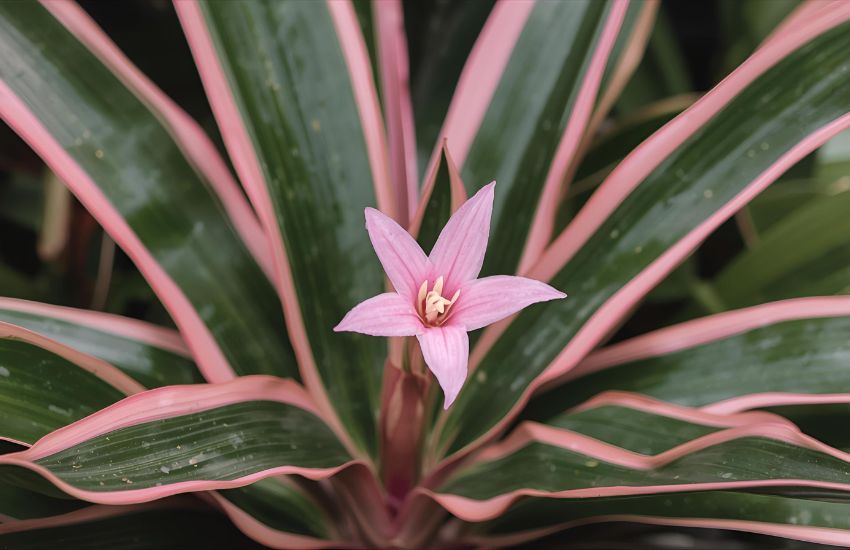Discovering a houseplant that combines striking color with low-maintenance charm can transform your indoor space, and the Earth Star Plant – Pink is precisely that. Known scientifically as Cryptanthus bivittatus, this pink star bromeliad captivates with its vibrant foliage arranged in a perfect rosette, making it a stunning addition to any pot or terrarium. Its compact size and unique leaf patterns allow you to place it in areas with indirect light, while avoiding harsh direct sunlight, keeping its pink hues vivid and healthy.
The Earth Star Plant – Pink is a captivating Cryptanthus that adds vibrant charm to any indoor space. Its striking pink, star-shaped leaves create a modern and eye-catching aesthetic, perfect for contemporary décor. Low-maintenance and adaptable, this plant thrives indoors with minimal care, making it an ideal choice for plant enthusiasts seeking both beauty and convenience.
In this blog post, you will explore practical tips on selecting the right pot, understanding the ideal light and humidity conditions, repot strategies, propagation techniques, and creative ways to showcase your succulent-like cryptanthus bivittatus. By the end, you’ll be fully equipped to nurture your earth star bromeliad into a thriving centerpiece of indoor beauty.
Complete Earth Star Plant – Pink Care Guide for Healthy, Vibrant Growth

The pink earth star plant, also known as earth star, is a stunning addition to any indoor collection. With its bright pink leaves, wavy margins, and showy appearance, this tropical plant adds elegance and vibrancy to your home. Also called starfish plant or red star bromeliad, it is part of the cryptanthus bromeliad family and is valued for being easy to care and low maintenance, making it ideal for both seasoned enthusiasts and those new to plant care.
Light and Placement
Your house plant thrives in indirect sun. While direct sun may enhance leaf color, excessive exposure can cause leaf burn. Position your indoor plants where they receive bright, filtered light, simulating their natural tropical habitat. Varieties such as dwarf rose-stripe star and pink starlite particularly benefit from moderate sunlight to maintain their vibrant hue.
Watering and Humidity
The earth star is a tropical species that prefers high humidity. Keep the soil lightly moist but never soggy to prevent root rot. Use a well-draining mix of peat and other aerated components. Mist your plant occasionally to maintain humidity and reduce the risk of mealybug infestations.
Soil and Fertilization
Good drainage is crucial for healthy growth. Opt for a soil mix designed for bromeliads or a combination of peat, orchid bark, and perlite. During the growing season, lightly fertilize every 4–6 weeks with a diluted, balanced fertilizer to support bright pink leaves and showy growth.
Propagation and Growth
You can propagate your red star bromeliad through offsets or pups that develop at the base of the mother plant. Gently separate these young plants and repot them in a suitable mix. Regular care will help you grow earth stars successfully, whether you choose a green earth star or the more colorful pink varieties.
Common Problems and Maintenance
Being generally easy to grow, the pink earth star plant is low maintenance, but it can be susceptible to pest issues such as mealybug or fungal problems in poorly drained soil. Avoid overwatering, monitor for signs of root rot, and ensure your plant has adequate airflow. Remove dead leaves to keep the plant healthy and encourage new growth.
Flowering
While primarily admired for its foliage, your starfish plant may produce white flowers under optimal conditions. These blooms, though small, add an extra showy feature to your indoor collection.
Propagation and Pest Management Tips for Your Pink Earth Star Plant

- The pink earth star plant belongs to the bromeliad family and produces offsets or pups when the plant is actively growing.
- To propagate, carefully separate pups from the mother plant and plant them in a potting mix made of peat moss, perlite, and other components of a well-draining soil.
- Using a proper soil mix prevents fungal issues and root rot, ensuring healthy root development.
- Place new plants in indirect sunlight, avoiding much sun, and maintain cooler temperatures at night to mimic the environment where the plant is native.
- When grown as ground cover or as individual plants indoors and outdoors, the pink earth star plant may face pests like mites or fungal infestations.
- Ensure good air circulation, avoid overwatering, and use well-draining soil to minimize pest and fungal risks.
- Minor pest issues can be managed by gently wiping leaves or applying mild, plant-safe treatments.
- Healthy actively growing plants are more likely to produce small white flowers, adding ornamental charm to your indoor or outdoor space.
- Combining careful propagation with attentive pest management helps your pink earth star remain vibrant, low maintenance, and long-lasting.
Conclusion
In conclusion, the pink earth star plant, native to Brazil, is an exceptional addition to any collection of plants indoors, offering vibrant foliage and enhancing indoor air quality. To ensure your plant will slowly thrive, keep the soil consistently moist but never waterlogged, allowing the top inch of soil to dry to the touch between waterings. Use a well-draining potting mix made from a mixture of peat and perlite, and provide plants [with] bright yet indirect light to maintain color and growth.
Regular feeding with a balanced liquid fertilizer during the growing season supports healthy development. When conditions are less favorable, reduce watering frequency and avoid direct sunlight to prevent leaf burn. By following these guidelines, you can enjoy a low-maintenance, showy house plant that flourishes beautifully.
Transform your living space today—bring home a pink earth star plant and experience the joy of a healthy, vibrant, and easy-to-grow tropical treasure.
Frequently Asked Questions (Earth Star Plant – Pink: A Stunning Cryptanthus for Modern Indoor Beauty)
What are the benefits of the Earth Star plant?
The Earth Star plant offers both aesthetic and practical benefits. Its striking star-shaped foliage adds vibrant color and texture to indoor spaces. This low-maintenance plant purifies the air, thrives in low light, and helps create a calming environment, making it ideal for homes and offices.
How do you take care of a pink Earth Star plant?
To care for a Pink Earth Star plant, place it in bright, indirect light and maintain warm temperatures. Keep the soil slightly moist but not soggy, and ensure good drainage. Mist occasionally to maintain humidity. Avoid direct sunlight to prevent leaf burn and promote vibrant pink coloration.
Is Cryptanthus easy to grow?
Yes, Cryptanthus, also known as Earth Star, is easy to grow. It thrives in bright, indirect light and humid environments. This low-maintenance plant requires well-draining soil and moderate watering. With minimal care and occasional misting, Cryptanthus adds vibrant color and texture to any indoor space effortlessly.
How long do Earth Star plants live?
Earth Star plants typically live for about three to five years. However, they produce small offshoots or “pups” before the mother plant dies, allowing the cycle to continue. With proper care—moderate light, humidity, and well-draining soil—these pups can thrive and extend the plant’s lifespan indefinitely.
